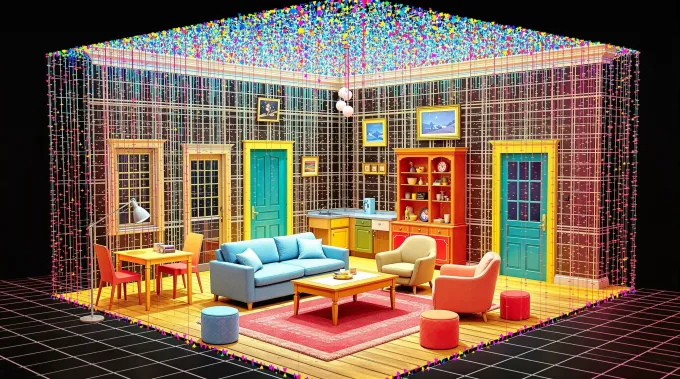With text prompts SpAItial gets $13M to build photorealistic 3D worlds
AI foundation models that can generate stunning visuals from a simple text prompt are currently all the rage. However, pioneering breakthroughs are now emerging that are capable of crafting full-fledged 3D environments from a text command.
It's not a matter of if these models will become common, but when. Making his mark in this groundbreaking field is one of Europe's leading 3D AI model researchers, Matthias Niessner. Matthias has temporarily stepped away from his visual computing & AI lab at the Technical University of Munich to establish a start-up called SpAItial, which specializes in this sphere.
In the past, Matthias was one of the founders of Synthesia, a company that uses AI to create lifelike avatars and has recently been valued at $2.1 billion. His current venture, SpAItial, has successfully raised a whopping $13 million seed round, a substantial amount for a European start-up. This funding round was spearheaded by Earlybird Venture Capital, a renowned European venture capitalist, and also involved participation from Speedinvest and several other high-profile investors.
Impressively, SpAItial has achieved this feat while yet to reveal much of their work, barring a fascinating teaser video showcasing the process of a 3D room generation from a text command.
The formidable technical team Matthias has gathered speaks volumes about the potential of SpAItial, with members like Ricardo Martin-Brualla, a former Googler, and David Novotny, a veteran from Meta. Together, they aim to challenge existing stereotypes in a sector that welcomes competition rooted in photorealism like Odyssey and World Labs, the latter being an AI start-up estimated to be valued at over $1 billion.
Despite the burgeoning competition, Matthias believes the battleground is still ripe, with more battles to be waged and victories to be won.
Matthias emphasized the tantalizing promise of making 3D worlds more lifelike and interactive–a quest that nobody has quite mastered yet.

Image Credits:SpAItial
From Gaming to Reality
It's still foggy to predict the demand for photorealistic 3D environments. While some envision lucrative opportunities ranging from virtual counterparts of physical entities (digital twins) to augmented reality, the promise seems fragmented enough, making it hard to strategize a direct market approach. Obvious applications lie in video game creation, but these models also hold potential in entertainment, construction visualizations, and future real-world uses like robotic training.
To address this, Matthias envisions licensing the foundation model to developers and enabling them to develop downstream applications specific to their needs. He has enlisted the acumen of Luke Rogers, a former Cazoo executive who shared the same roof with Niessner during his time as a visiting assistant professor at Stanford.
SpAItial is lining up partners that are open to working with preliminary models while identifying those who would prefer to wait for more advanced versions. They aim to strike a balance between revenue and expenditures, focusing on beneficial hiring rather than bulk hiring.
Matthias and his team are continually striving to create larger and more interactive 3D spaces, such as creating a realistic shattering glass effect. Their ultimate dream? Enabling a 10-year-old to type in text and create their own video game in 10 minutes.
While some may see the creation of 3D objects as low-hanging fruit, Matthias believes it's a more complex task with gaming platforms exercising tight control. However, if platforms like Roblox decide to build these capabilities internally, SpAItial is all set to revolutionize how CAD is perceived today. The next era in 3D generation is just warming up.